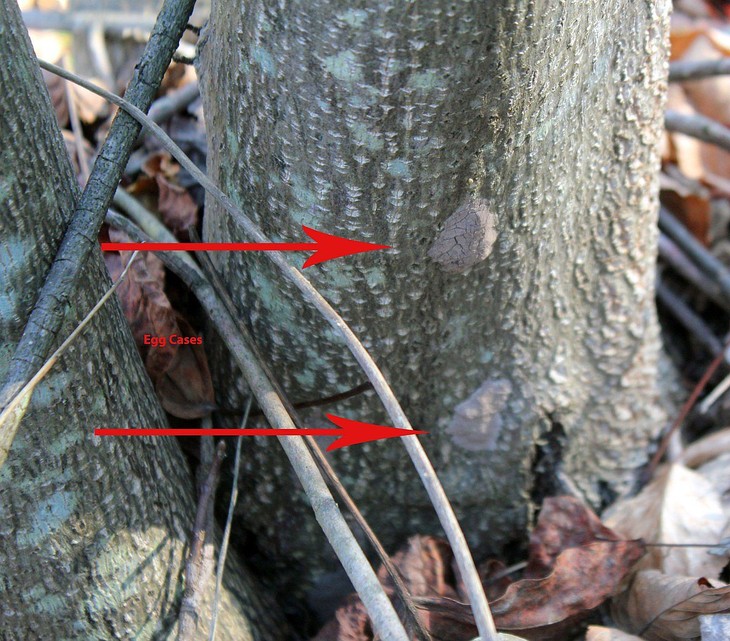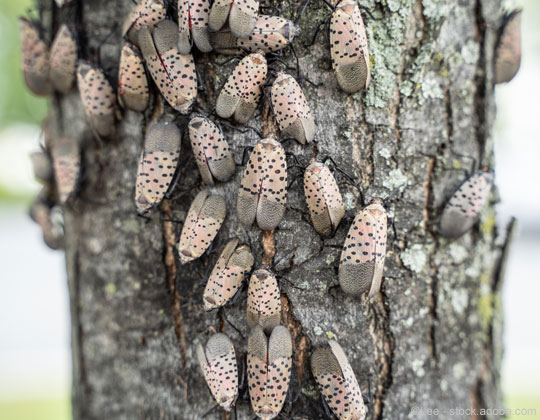Spotted lanternfly quarantine expands to 12 more counties in Pennsylvania
Pennsylvania is adding 12 counties to its spotted lanternfly quarantine zone ahead of the 2020 spring hatch, bringing the total number in the zone to 26.
“The spotted lanternfly is more than a pest in the literal sense,” Pennsylvania agriculture secretary Russell Redding said in a news release.
The spotted lanternfly is a serious risk to the state’s economy, he said.
“Whether you think it’s your job or not, we need every Pennsylvanian to keep their eyes peeled for signs of this bad bug – to scrape every egg mass, squash every bug, and report every sighting. We need to unite over our hatred for this pest for our common love: Pennsylvania,” Redding said in the news release.
The spotted lanternfly is an invasive planthopper native to China, India and Vietnam. It has the potential to greatly affect agricultural crops, including grapes, hops and hardwoods. Adults are approximately 1 inch long by a half inch wide, with distinctive gray, black and red wings and a yellow abdomen. Immature stages are black with white spots, and develop red patches as they grow.
The 12 counties added to the quarantine zone are:
- Allegheny.
- Beaver.
- Blair.
- Columbia.
- Cumberland.
- Huntingdon.
- Juniata.
- Luzerne.
- Mifflin.
- Northumberland.
- Perry.
- York.
The state ag department reports that the new counties aren’t completely contaminated. Rather, they have a few municipalities with a known infestation. The countywide quarantine is “out of an abundance of caution.”
Pennsylvania, New York, and New Jersey, require permits for motor carriers that pick up or deliver a load in the quarantine zone. Satellite populations have appeared in Delaware, Maryland, New York and Virginia. Other surrounding states, have issued a quarantine for counties where the presence of spotted lanternfly has been confirmed.
Truck drivers should be aware, because states can levy fines and civil penalties for transporting – knowingly or unknowingly – spotted lanternfly and/or their eggs.
Fines associated with noncompliance can be up to $300 for a criminal citation or up to $20,000 for a civil penalty.
September is the start of egg-laying season for the spotted lanternfly. The egg mass stage looks “like a smear of mud” and can be found on any smooth, hard surface. Egg masses can be found on trees and plants, pallets, bricks, stone and metal.
The egg mass stage is more difficult to destroy. The Penn State Extension office recommends scraping the mass off of whatever surface it’s on and into a container that has rubbing alcohol or hand sanitizer. Then double-bag the container before disposing of it. Nymphs or adult lanternflies can be killed simply by being smashed or squished.

Loads that originate outside the quarantine zone and are not being delivered within it do not require a permit to travel through the zone, per the Pennsylvania State University Extension office, though the office suggests that such businesses “consider securing the truck and load from hitchhiking spotted lanternfly. Trucks that stop in the zone and unload product are required to obtain permits.
Penn State Extension and state Department of Agriculture have developed a free, self-paced, “train the trainer” online course to train a designated employee – usually the owner, manager, or supervisor – on how to comply with the quarantine regulations. A link to the course is available via the OOIDA Foundation website.
If you are outside of the quarantine area, report any sightings to the Pennsylvania State University Extension at Extension.PSU.edu/spotted-lanternfly or call 888-4-BADFLY (888-422-3359).










